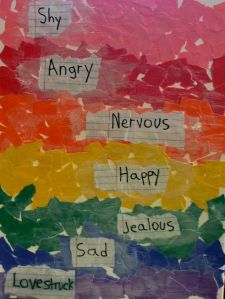 Hello from the Potato State! My name is Stacey and I am co-runner of a little Idaho blog called: A PSR Gathering. I am here today to give a little insight on what we do!
Hello from the Potato State! My name is Stacey and I am co-runner of a little Idaho blog called: A PSR Gathering. I am here today to give a little insight on what we do!
In Idaho we have an awesome service offered to children and adults called PSR or Psycho-Social Rehabilitation. PSR is not available to everyone (it is a Medicaid only service and not in every state) which examples the blank stares I often get when I tell people what I do. Katie and I work with children (ages 4-19 is the general range of clients) but, adult services are available! Clients who qualify for PSR have been diagnosed with a Serious Emotional Disturbance (SED) for children, or a Severe and Persistent Mental Disorder (SPMD) for adults. I am going to keep this simple and sweet for you today, if you have a questions feel free to ask!
Who?
Have a Bachelors degree (in Social Services, Early Childhood Education, Sociology, Social Work, Psychology, and the like)? You can do PSR! You will have to gain a USPRA certification though, if you wish to work in the state of Idaho. Some states even require a master’s degree.
About us:
Katie (on the left): I graduated with a BAS in Child Care and Development from Boise State University in 2009. I have lived in Boise the majority of my life, am married with two dogs and with what spare time I can find love to travel, run, camp and read. I have worked with kids for about 15 years in many different ways, from camp counselor to tutor to Pre-school teacher! I have been working as a PSR Specialist for about two and a half years now, and am just feeling like I’m getting the hang of it!
Stacey (on the right): I graduated from Boise State University in 2010, with my B.F.A in Drawing and studies in Psychology and Art Therapy. My family moved us to Boise when I was 10 and we have been here ever since. I just bought a house a street over from my childhood home and live there with my boyfriend of many years and our bully breed pup, Penny. I have too many interests to list but the tops are: creating, motorcycles, bargain hunting and kicking back! I have always had a passion for helping others, which has given me the opportunity to work in an array of jobs. From working with animals, to slinging coffee or advising college students… I’ve done it all! I have been a PSR specialist for going on two years and can’t wait to see where it takes me.
What do we do as PSR workers?
PSR is individual skill based training, such as anger management, social skills emotions recognition, etc.
When do we work?
Each client qualifies for about 4-5 hours per week. We work in the community so our hours are outside of school hours–afternoons, night and weekends. As you can imagine we love summer for its flexibility!
So…an office? School?…where do you work?
PSR is a community-based position, no office (unless your car counts–I haven’t used my trunk for purposes other than hauling around ‘PSR’ tools for 2 years now-ha!). We work in the homes or take them out into the community to work. Libraries, malls, Barnes and Noble, coffee shops, parks–you get the idea.
Why?
Our goal(s) in PSR are simple. When a client comes into PSR a treatment plan is designed that consists of measurable and behaviorally specific objectives. PSR is there to build skills to better communicate, interact within society, build relationships, handle situations and overall be the best kiddos they can be!
How?
We do an array of activities with clients (based on age, understanding and needs). Being out in the community and in the homes, we get a good glimpse on what our clients are like when their ‘guard’ is down, which lends to a lot of ‘real life training.’ We also get to be silly kids our selves by using play and art to teach our clients new skills! Check http://www.psrideaweb.com/for awesome activity ideas!













